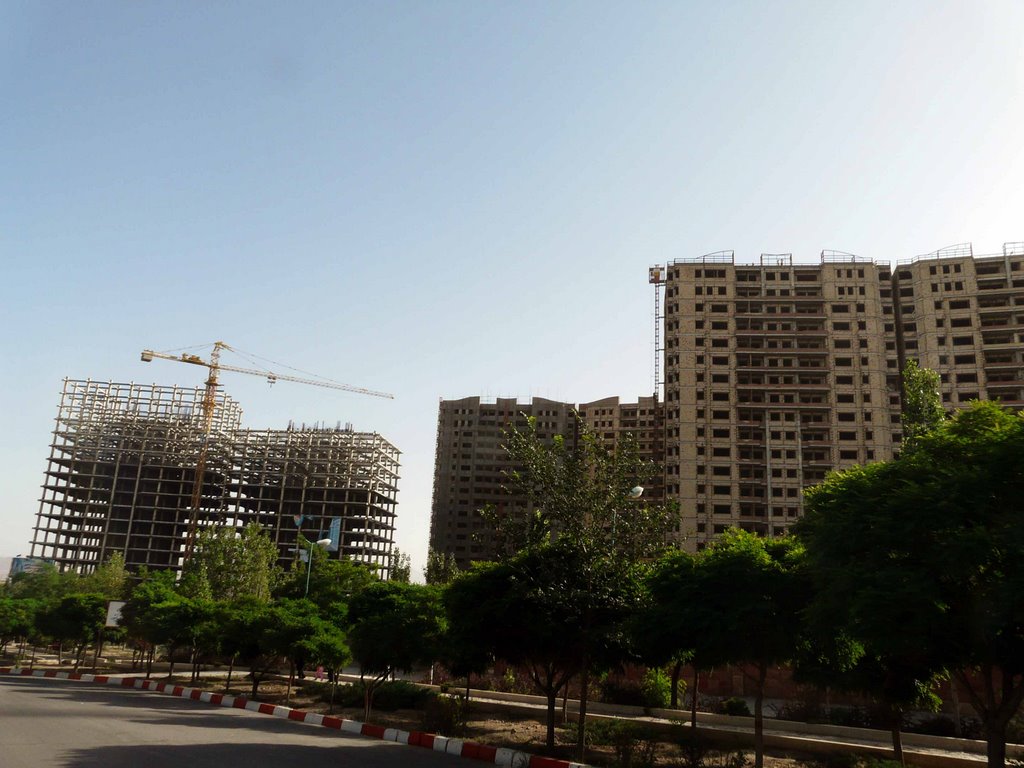Based on the recent preliminary report released by the Central Bank of Iran, the economy expanded by 3 percent in the Iranian year ending March 2015. The year before that saw the economy contract by 1.9 percent. As the manufacturing and financial intermediation sectors constitute 12 and 2 percent of the economy respectively, the manufacturing sector, mostly auto manufacturing, and the financial intermediation, mostly banking, accounted for an aggregate of 1.7 percent out of the 3 percent growth in the economy.
However, the construction sector, which accounts for 8 percent of the economy, contracted by 0.4 percent last year. In the year before that, the construction sector contracted by 3.1 percent. This leaves the construction sector thirsty for new investments with large potential for growth in the coming years.
The CBI figures indicate that the private sector is still showing very small interest in construction. Due to the government’s tight economic policy, most of the liquidity has been dried out of other industries into high rate bank deposits, gaining the investors over 20 percent annually. The financial intermediation sector alone has accounted for more than a third of last year’s economic growth.
Iran’s real-estate market has seen big fluctuations in the last couple of decades. In contrast to financial intermediation and manufacturing industries and just like the mining industry, the construction industry has a relatively long payback period. This requires investors to concentrate their investment timings around the industries’ downturn so they can cash out and collect their gains when the market gets hot. This is a common trend in Iran’s mining industry but not in the construction industry.
Iran has a relatively large real-estate market without any dominant player. The poor timing of investment in the construction industry has led to an increase in fluctuations in the real-estate market in the past. In addition to high levels of fragmentation and the lack of central decision-making in the industry, low transparency makes this industry’s large number of players lack the proper base required to come up with rational decisions. Hence, throughout the time Iran’s real-estate market has repeatedly seen herding behaviors of its suppliers resulting in the creation of bubbles in this market.
A historical review of housing and building permits in Iran clearly indicates that investments start to flow into the real-estate market as soon as prices reach their peaks. Instead of investing in market downturns, investors tend to get greedy seeing high prices and pump money in the real-estate market and further inflate the property bubble that leads to vast amounts of frozen capital in construction after the bubble bursts.
Building permit reports are released on a monthly basis in most countries. In the US, these reports are released with a 16- to 18-day delay. In Iran investors rely on seasonal reports released by CBI with nine- to 12-month delay. This delay has resulted in the building permit reports behaving more like a coincident economic indicator rather than a leading economic indicator.
According to CBI reports, residential building starts for the first six months of the last Iranian year, ending in October 2014, amounted to 41 million square meters which is at their eight-year low. For the same period, building starts for residential and commercial buildings combined were 52 million square meters, which is also an eight-year record low. But investors seem to be more interested in commercial properties. The percentage of investments allocated to the construction of commercial properties has reached 22% which is the highest figure to date.
Now we are facing another downturn in Iran’s real-estate market with historic low levels of investments. This may lead to the creation of a new bubble in two or three years when demand regains strength. Moreover, investments, which should have been made some years ago, will rush into the market only to make matters worse


